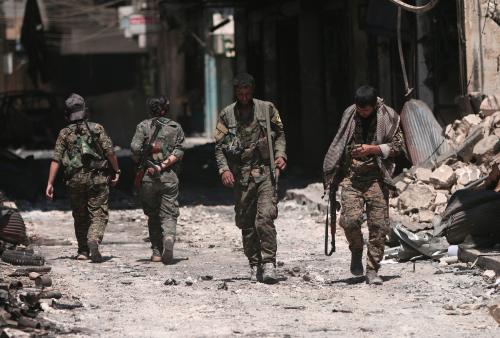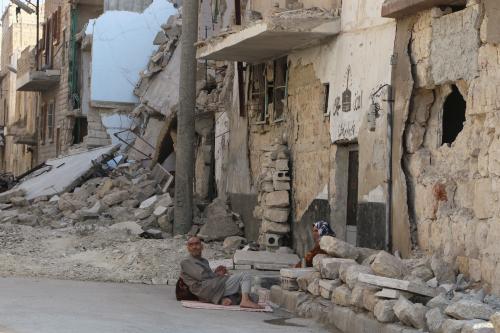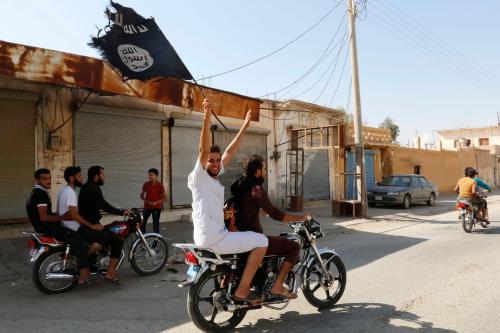Attacks across the Western world—including most recently in Nice, but also of course in Brussels, Paris, San Bernardino, and elsewhere—highlight the growing threat from extremism, with Syria as its home base. It’s time to recognize, therefore, that containment of the Syria crisis (which I think is essentially President Obama’s policy and which many in the scholarly community continue to support) is not working.
Although ISIS has hideouts around the world, Syria is really its epicenter, as my colleague Will McCants has written in his book “The ISIS Apocalypse.” It’s the epicenter not only in terms of operational hold on territory, but also in terms of the group’s narrative: that of waging an apocalyptic fight against the infidels, through which it will “liberate” the Middle East and turn it into a broader ISIS-controlled caliphate.
But current U.S. policy on Syria appears to try to pull off a far-fetched three-cushion pool shot, in the words of The Washington Post’s David Ignatius: try to get joint U.S.-Russian operations against Nusra and ISIS, and reduce Bashar Assad’s attacks on moderate rebel forces so they can gain ground. (And in the meantime, I’ll add, get support from Jordan’s King Abdullah and all of our allies to put pressure on different groups at different times.) But will all that actually come together? I applaud Secretary of State John Kerry, with his seemingly boundless energy, for trying to find some way forward. But with only 300 U.S. personnel on the ground and no advantage in structural forces, this approach is not going to work. It won’t work because fundamentally the United States and its allies are weak on the ground militarily—and we don’t have a serious strategy for changing that.
We need to think about solving this problem, and soon. I would propose the following changes in our Syria policy:
- On the diplomatic front, I think we need to envision some kind of a confederation model as our political goal. There is no other realistic way to square the fact that the United States doesn’t have major allies on the ground, except the Kurds, with real military potential. And yet, we are still hoping to simultaneously defeat ISIS, defeat the Nusra Front, and replace Assad. That approach just doesn’t make sense.
- Secondly, in terms of military assets on the ground, there are several things we should do differently. For one, we need to be somewhat more willing to work with groups that are tainted by past association with the Nusra Front, as long as we can vouch for the fact that they are not themselves Nusra members. We should give them anti-tank missiles—though not anti-aircraft missiles—and much more help in terms of ammunition, logistics assistance, and food, to help them build up their forces. We must also be clever about employing various options for no-fly zones: We cannot shoot down an airplane without knowing if it’s Russian or Syrian, but we can identify those aircraft after the fact and destroy Syrian planes on the ground if they were found to have barrel-bombed a neighborhood, for example. These kinds of operations are complicated, no doubt, and especially with Russian aircraft in the area—but I think we have made a mistake in tying ourselves in knots over the issue, since there are options we can pursue.
- Finally, we should push the debate about what creating safe havens really means. I don’t think we should start declaring safe havens, but rather try to help them emerge. The Kurds are making gains in Syria’s northeast, for instance, as are some forces on the southern front—so, if the United States, in cooperation with its allies, accelerates and intensifies its involvement on the ground in those areas, safe havens can essentially emerge. An important advantage of this approach is that it doesn’t require putting American credibility on the line, but does help local allies build up and reinforces successes on the ground.
None of these proposals would be a panacea, and each would come with challenges. But we are in need of a more realistic Syria policy, recognizing that the current three-cushion-shot approach is not working, nor will it ever work if current conditions continue.






Commentary
What to do when containing the Syrian crisis has failed
August 1, 2016